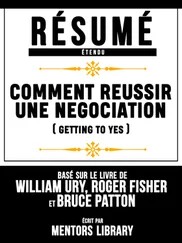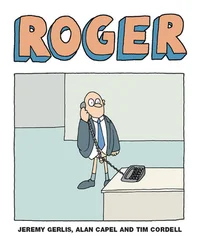3 3 Move Fast and Break Things 4 The Children of Fogg 5 Mr. Harris and Mr. McNamee Go to Washington 6 Congress Gets Serious 7 The Facebook Way 8 Facebook Digs in Its Heels 9 The Pollster 10 Cambridge Analytica Changes Everything 11 Days of Reckoning 12 Success? 13 The Age of Surveillance Capitalism 14 What Is to Be Done 15 What Government Can Do 16 What Each of Us Can Do Epilogue Appendix 1: Memo to Zuck and Sheryl: Draft Op-Ed for Recode Appendix 2: George Soros’s Davos Remarks: “The Current Moment in History” Bibliographic Essay Index Acknowledgments About the Author About the Publisher
Move Fast and Break Things 3 Move Fast and Break Things 4 The Children of Fogg 5 Mr. Harris and Mr. McNamee Go to Washington 6 Congress Gets Serious 7 The Facebook Way 8 Facebook Digs in Its Heels 9 The Pollster 10 Cambridge Analytica Changes Everything 11 Days of Reckoning 12 Success? 13 The Age of Surveillance Capitalism 14 What Is to Be Done 15 What Government Can Do 16 What Each of Us Can Do Epilogue Appendix 1: Memo to Zuck and Sheryl: Draft Op-Ed for Recode Appendix 2: George Soros’s Davos Remarks: “The Current Moment in History” Bibliographic Essay Index Acknowledgments About the Author About the Publisher
Try not to become a man of success, but rather try to become a man of value. —ALBERT EINSTEIN
During Mark Zuckerberg’s sophomore year at Harvard, he created a program called Facemash that allowed users to compare photos of two students and choose which was “hotter.” The photos were taken from the online directories of nine Harvard dormitories. According to an article in Fast Company magazine, the application had twenty-two thousand photo views in the first four hours and spread rapidly on campus before being shut down within a week by the authorities. Harvard threatened to expel Zuckerberg for security, copyright, and privacy violations. The charges were later dropped. The incident caught the attention of three Harvard seniors, Cameron Winklevoss, Tyler Winklevoss, and Divya Narendra, who invited Zuck to consult on their social network project, HarvardConnection.com.
In an interview with the campus newspaper, Zuck complained that the university would be slow to implement a universal student directory and that he could do it much faster. He started in January 2004 and launched TheFacebook.com on February 4. Six days later, the trio of seniors accused Zuck of pretending to help on their project and then stealing their ideas for TheFacebook. (The Winklevoss twins and Narendra ultimately filed suit and settled in 2008 for 1.2 million shares of Facebook stock.) Within a month, more than half of the Harvard student body had registered on Zuck’s site. Three of Zuck’s friends joined the team, and a month later they launched TheFacebook at Columbia, Stanford, and Yale. It spread rapidly to other college campuses. By June, the company relocated from Cambridge, Massachusetts, to Palo Alto, California, brought in Napster cofounder Sean Parker as president, and took its first venture capital from Peter Thiel.
TheFacebook delivered exactly what its name described: each page provided a photo with personal details and contact information. There was no News Feed and no frills, but the color scheme and fonts would be recognizable to any present-day user. While many features were missing, the thing that stands out is the effectiveness of the first user interface. There were no mistakes that would have to be undone.
The following year, Zuck and team paid two hundred thousand dollars to buy the “facebook.com” domain and changed the company’s name. Accel Partners, one of the leading Silicon Valley venture funds, invested $12.7 million, and the company expanded access to high school students and employees of some technology firms. The functionality of the original Facebook was the same as TheFacebook, but the user interface evolved. Some of the changes were subtle, such as the multitone blue color scheme, but others, such as the display of thumbnail photos of friends, remain central to the current look. Again, Facebook made improvements that would endure. Sometimes users complained about new features and products—this generally occurred when Zuck and his team pushed users too hard to disclose and share more information—but Facebook recovered quickly each time. The company never looked back.
Facebook was not the first social network. SixDegrees.com started in 1997 and Makeoutclub in 1999, but neither really got off the ground. Friendster, which started in 2002, was the first to reach one million users. Friendster was the model for Facebook. It got off to a fantastic start, attracted investors and users, but then fell victim to performance problems that crippled the business. Friendster got slower and slower, until users gave up and left the platform. Started in 2003, MySpace figured out how to scale better than Friendster, but it, too, eventually had issues. Allowing users to customize pages made the system slow, but in the end, it was the ability of users to remain anonymous that probably did the most damage to MySpace. Anonymity encouraged the posting of pornography, the elimination of which drained MySpace’s resources, and enabled adults to pose as children, which led to massive problems.
The genius of Zuck and his original team was in reconceptualizing the problem. They recognized that success depended on building a network that could scale without friction. Sean Parker described the solution this way in Adam Fisher’s Valley of Genius : “The ‘social graph’ is a math concept from graph theory, but it was a way of trying to explain to people who were kind of academic and mathematically inclined that what we were building was not a product so much as it was a network composed of nodes with a lot of information flowing between those nodes. That’s graph theory. Therefore we’re building a social graph. It was never meant to be talked about publicly.” Perhaps not, but it was brilliant. The notion that a small team in their early twenties with little or no work experience figured it out on the first try is remarkable. The founders also had the great insight that real identity would simplify the social graph, reducing each user to a single address. These two ideas would not only help Facebook overcome the performance problems that sank Friendster and MySpace, they would lay the foundation for a company with more than two billion users.
When I first met Zuck in 2006, I was very familiar with Friendster and MySpace and had a clear sense that Facebook’s design, its insistence on real identity, and user control of privacy would enable the company to succeed where others had failed. Later on, Facebook would relax its policies on identity and privacy to enable faster growth. Facebook’s terms of service still require real identity, but enforcement is lax, consistent with the company’s commitment to minimize friction, and happens only when other users complain. By the end of the decade, user privacy would become a pawn to be traded to accelerate growth.
In 2006, it was not obvious how big the social networking market would be, but I was already convinced that Facebook had an approach that might both define the category and make it economically successful. Facebook was a hit with college students, but I thought the bigger opportunity would be with adults, whose busy schedules were tailor-made for the platform. To me, that suggested a market opportunity of at least one hundred million users or more in English-speaking countries. In those days, one hundred million users would have justified a valuation of at least ten billion dollars, or ten times the number Yahoo had offered. It never occurred to me then that Facebook would fly past two billion monthly users, though I do remember the first time Zuck told me his target was a billion users. It happened some time in 2009, when Facebook was racing from two hundred to three hundred million users. I thought it was a mistake to maximize user count. The top 20 percent of users would deliver most of the value. I worried that the pursuit of one billion users would force Zuck to do business in places or on terms that should make him uncomfortable. As it turned out, there were no visible compromises when Facebook passed a billion monthly users in September 2012. The compromises were very well hidden.
Читать дальше






